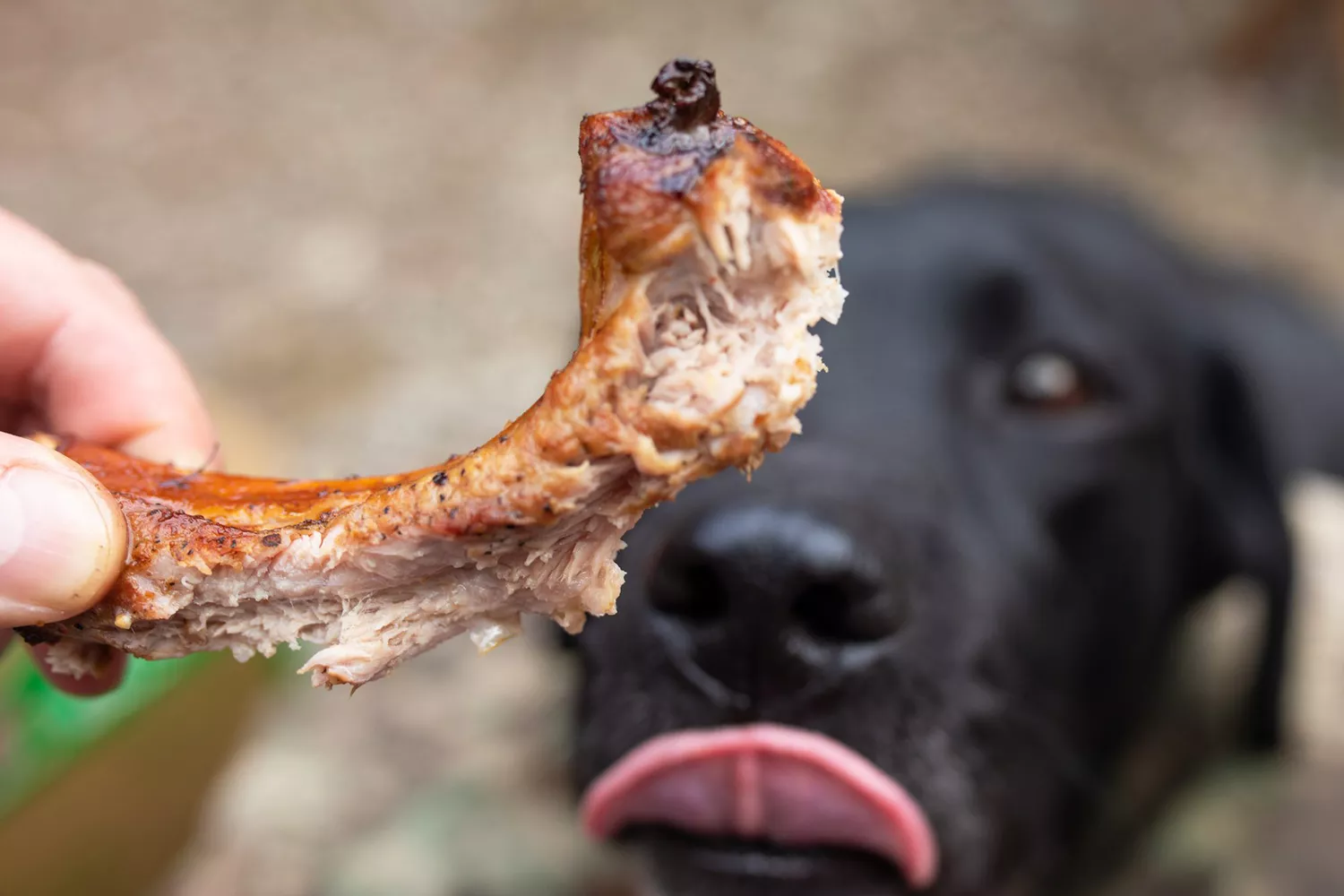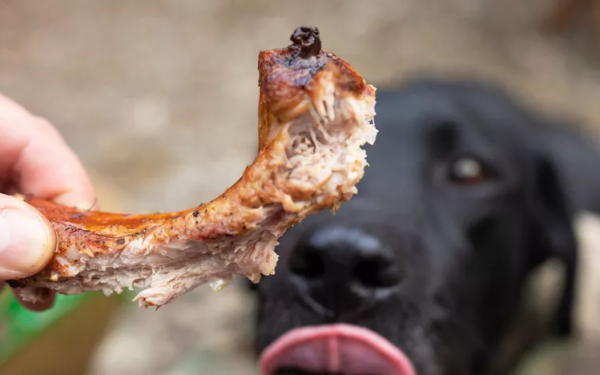You may want your baby back (baby back, baby back) ribs, as the Chili’s commercial jingle went a few years ago, but is it cool to give beef or pork rib bones to dogs as a treat once in a while?
While there’s anything inherently toxic to dogs about cooked pork or beef rib meat, bones are a more complicated issue. Because of the chances of choking, digestion problems, and sharp bones in the gastrointestinal tract, veterinarians like Renee Schmid, DVM, DABVT, DABT, a veterinarian toxicologist who works with Pet Poison Helpline, have begun shying away from recommending that dogs chew on animal bones.
Here’s why.

Are Ribs Safe for Dogs? A Look at Different Preparation MethodsRaw Ribs: A Risk
When humans cook meat and other food, we’re doing a lot of work to make it more digestible: We’re softening it, breaking down more difficult-to-digest parts of it, and making sure we cook off bacteria or other contaminants that could make us sick.
You circumvent all that if you offer raw ribs to a dog, who may enjoy gnawing on an uncooked rib bone—but who may still be at risk of getting sick.
“Raw meats can cause food poisoning due to bacteria, which is a risk for humans handling the food as well,” Schmid says. “Raw pork also carries the risk of transmission of a roundworm called Trichinella spiralis, which can lead to Trichinosis in you or your pet.” Eww!
Raw ribs present less of a danger of a dog breaking them into smaller, more dangerous pieces that can be swallowed and get stuck in their digestive tract, but many veterinarians advise against letting dogs chew them unless they’re carefully supervised. Even then, you never know when your dog might successfully crack a bone into a piece that could be swallowed.
Cooked Rib Bones: A Greater Risk
Cooked rib bones carry an even greater risk than raw beef or pork rib bones, because cooking dries out and weakens the bones, making them more likely to break.
“These bones, cooked or uncooked, are a risk to dogs for causing foreign body obstructions that may require surgery,” Schmid says. “And slivers of the bones can perforate the intestinal tract, leading to sepsis and death.”
Dogs have lived a long time on this earth eating raw meat and crunching up bones, but if something went wrong in the wild, there was no veterinary hospital for a dangerously blocked-up or choking dog. Nowadays, you can be sure that a stuck bone can end up as one heck of a hospital bill.
Cooked Rib Meat
There is nothing inherently toxic or poisonous about cooked beef or pork for dogs. But as with any human food, there are ingredients in seasonings, barbecue rubs, sauces, salt, sugar, and other tasty additions can make rib meat upsetting to your dog’s stomach or worse. Too much salt in one meal or even over longer periods of time can harm your dog’s health, as canines don’t need a lot of sodium in their diet. Extra calories can put pounds on your dog, and extra fat (even a single extra-fatty meal) can inflame a dog’s pancreas and cause health problems.
Signs of stomach upset or pancreatitis, from too much fat, may include vomiting, diarrhea or loss of appetite, Schmid says.
If you really, really want to offer a little bit of cooked rib meat to your dog, keep it lean (light on the fat) and avoid pieces that contain any additives like sauce or seasoning. But don’t panic over a few nibbles, Schmid says.
“Onions and garlic are toxic to dogs,” she says, “but the amount in rubs and seasonings is not likely to be enough to be a toxicity concern, just stomach upset.”
How to Know if Your Dog Has Eaten Something Toxic
The Dangers of Feeding Dogs Rib Bones
So, you’ve kept the fatty and heavily seasoned ribs away from your pooch (great work!), but surprise, surprise, your four-legged friend stole some bones out of the trash or off a plate. How much do you really need to worry about? There are a few things to watch out for if your pup’s a counter-surfer and snagged a BBQ snack.
The first and most obvious risk is that they could choke. Choking situations are obvious and can be scary, says Schmid, and require an immediate visit to an emergency hospital: “The dog will be trying to cough and will collapse due to a lack of oxygen.”
If a bone is lodged in your dog’s esophagus (anywhere from the throat down to where the throat meets the stomach), your pup may be excessively drooling, coughing, rubbing their head and neck along the ground, or possibly vomiting. If a dog has persistent vomiting, has significant lethargy, pain in the abdomen, bloody stool, or signs of the bone being lodged in the esophagus, they also need to get to a vet clinic right away.
If you know your dog has eaten a bone or a piece of a bone but isn’t showing signs of distress, you should still contact a vet clinic ASAP, Schmid says: “Radiograph images can be taken to help determine the likelihood of the bone passing on its own, and we can see whether making your dog vomit might bring the bone up.”
Safer Alternatives to Rib Bones
If you are sworn off animal bones for your dog, it’s not the end of the world for a dog who loves to chew. There are many other options for chewing and sharing food with you and your family.
You can try out different, durable chew toys to see if your dog digs those as much as the real thing. You can even freeze tasty treats in some of them to make it more of a long-lasting challenge to chew and lick. There are even several longer-lasting chew bone treat options that can even help your dog’s dental health as they chew. Win-win!



